
| (donherbisonevans@outlook.com) and Stella Crossley |
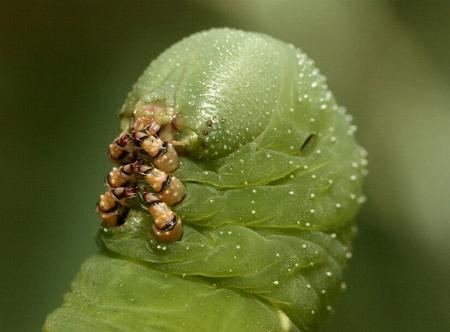
|
showing claws on true legs >Psilogramma casuarinae caterpillar (Photo: courtesy of Trevor Jinks, Upper Burnett, Queensland) |

| (donherbisonevans@outlook.com) and Stella Crossley |

|
showing claws on true legs >Psilogramma casuarinae caterpillar (Photo: courtesy of Trevor Jinks, Upper Burnett, Queensland) |
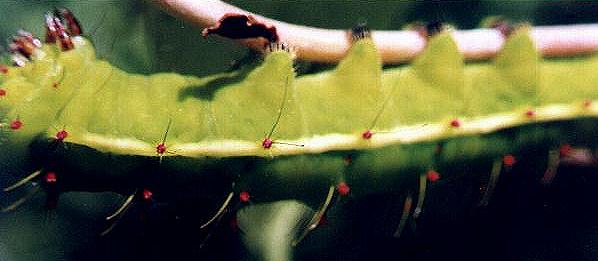
|
close-up of upside-down
Austrocaligula eucalypti
caterpillar, showing claws on true legs (far left), and crochets on four of the prolegs (Photo: courtesy of Jan MacDonald, Finch Hatton, Queensland) |
Most caterpillars also have up to five pairs of prolegs. The prolegs are not segmented, but are cylindrical. They are used for walking and clinging, as they have a set of microscopic hooks on the base (crochets). The last pair of prolegs on the anal abdominal segment are usually called claspers.
So in all, they have 16 legs: they are hexadecapodal.
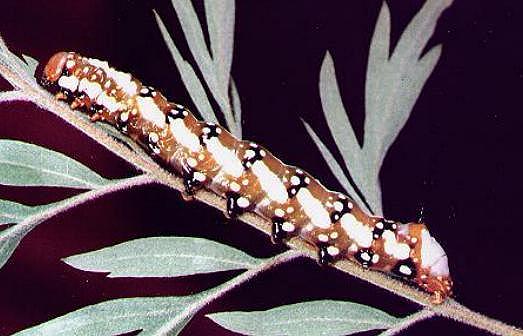
|
full set of six true legs and ten prolegs Psalidostetha banksiae caterpillar (Photo: courtesy of Bruce Anstee, Riverstone, New South Wales) |
The larvae of other species of insects such as wasps and flies can have more than 16 legs.
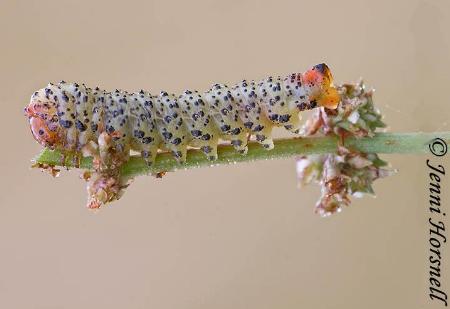
|
full set of six true legs and fourteen prolegs Larva of a Sawfly, HYMENOPTERA (not a true caterpillar) Photo: courtesy of Jenni Horsnell, Wagga Wagga |
Caterpillars with all 16 legs walk with a ripple motion.
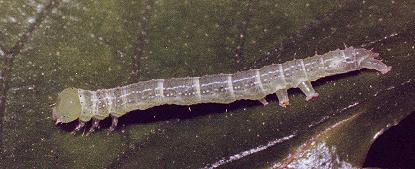
|
only eight prolegs Caterpillar of Anomis flava, |
The Caterpillars of some species have atrophied prolegs, and appear to only have 8, 6, or 4 prolegs :
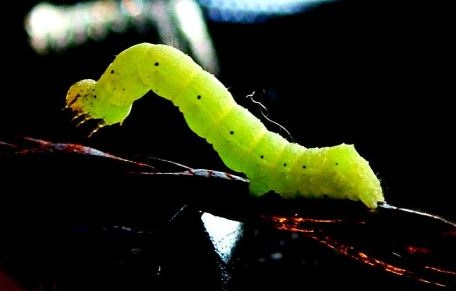
|
only six prolegs Caterpillar of Chrysodeixis eriosoma, (Photo: courtesy of Boris Branwhite, Central Coast, New South Wales) |
These caterpillars move in a looper motion.
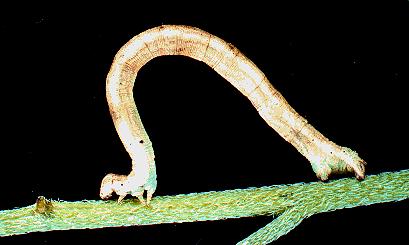
|
only four prolegs Caterpillar of Scopula perlata, |
Some have no prolegs at all, and move in a slug-like motion.
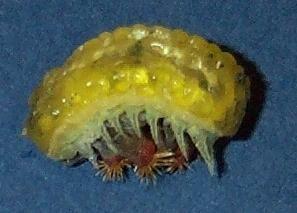
|
no prolegs at all upside down caterpillar of Doratifera vulnerans, (Photo: courtesy of Benoit Panassie) |
The 6 true legs on the thorax are retained through pupation and are transformed into the legs of the adult. However, in the metamorphosis, the all prolegs disappear. Also, one pair of true legs may have atrophied over the millenia through evolution, so that many butterfly species have only four legs, for example:
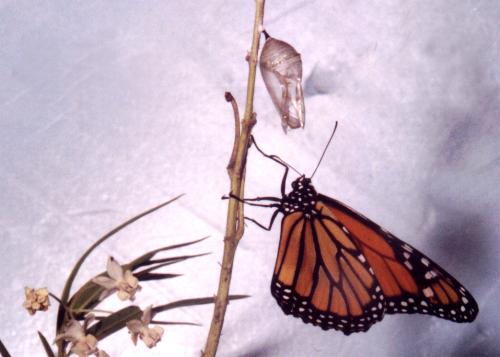
 FAQ |  butterflies |  Lepidoptera |  moths |  FAQ |
(updated 11 April 2013, 23 November 2018)